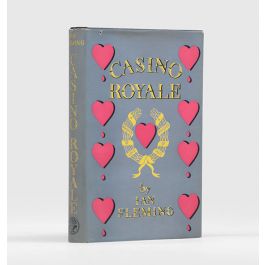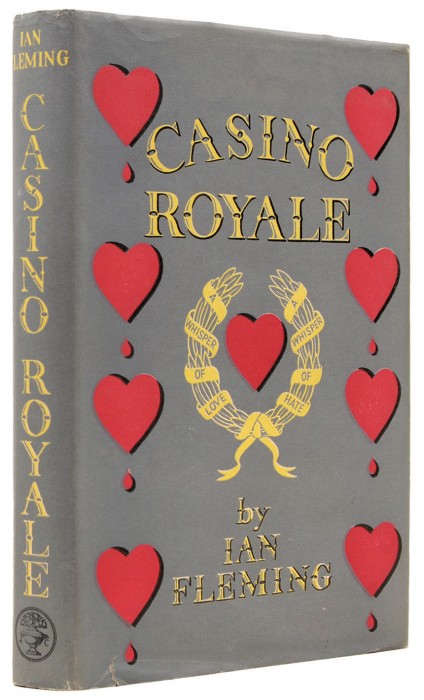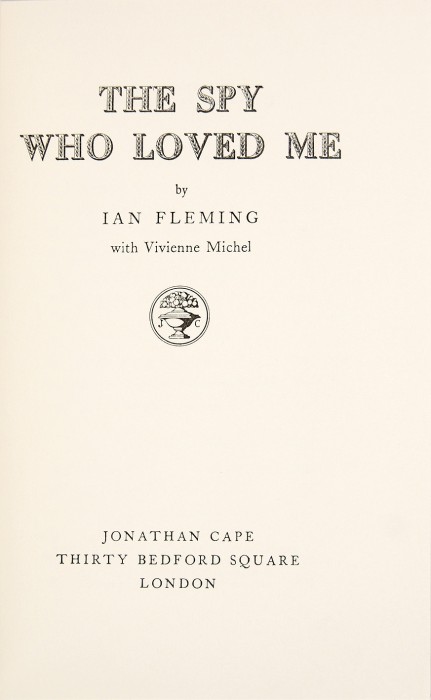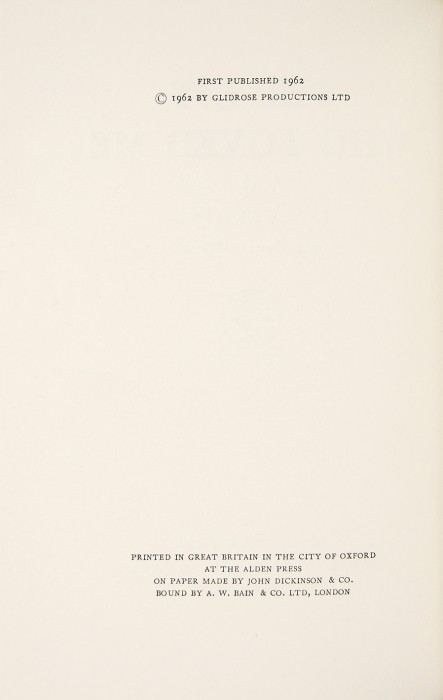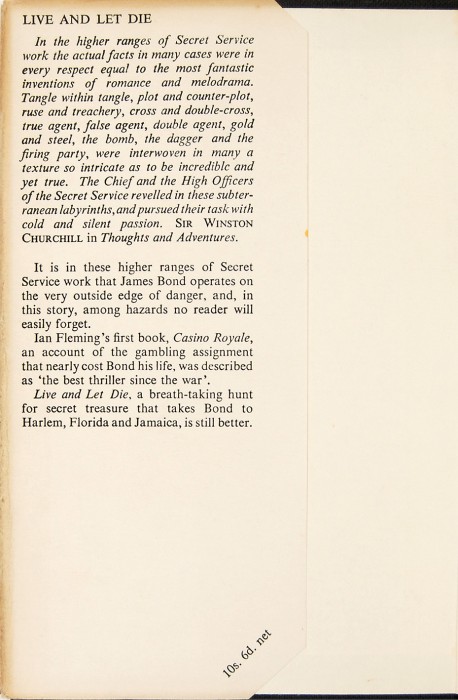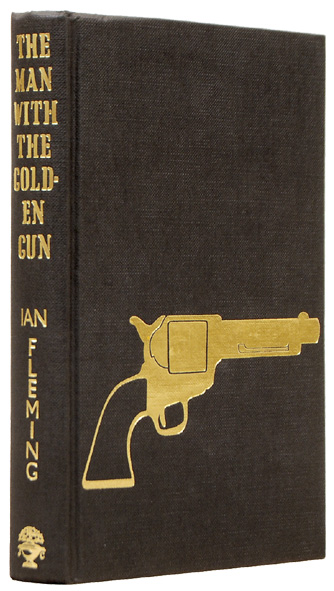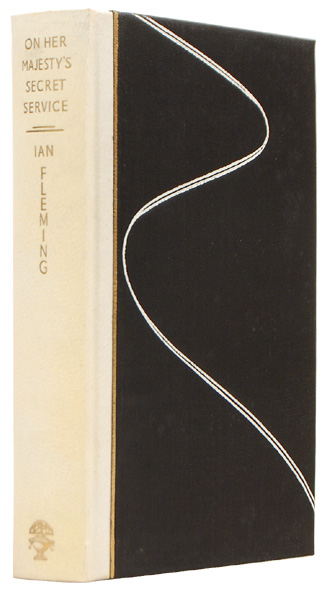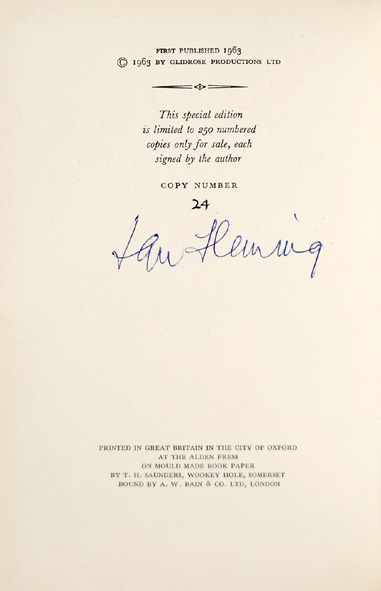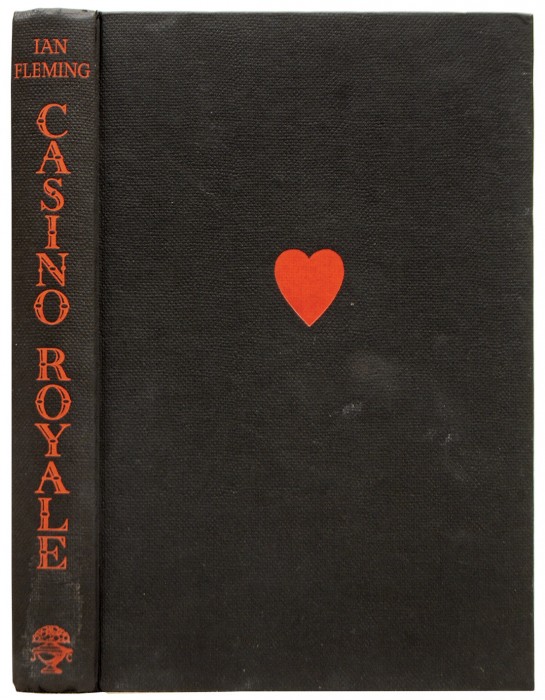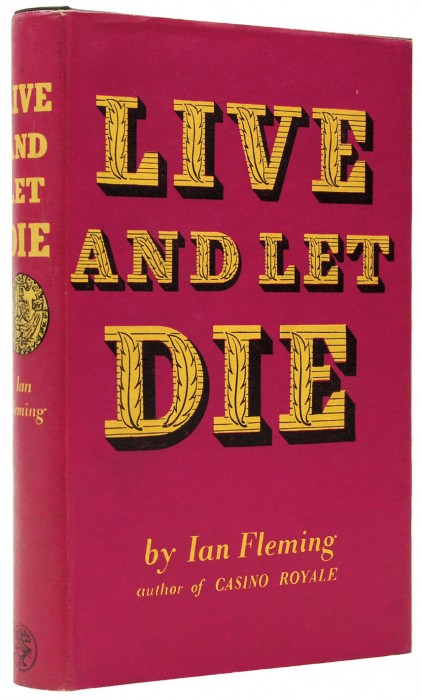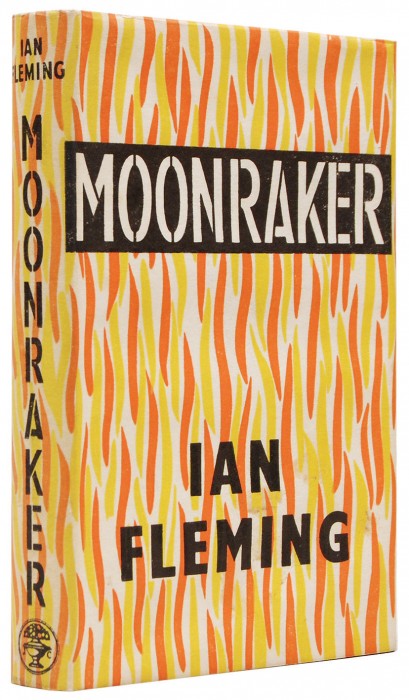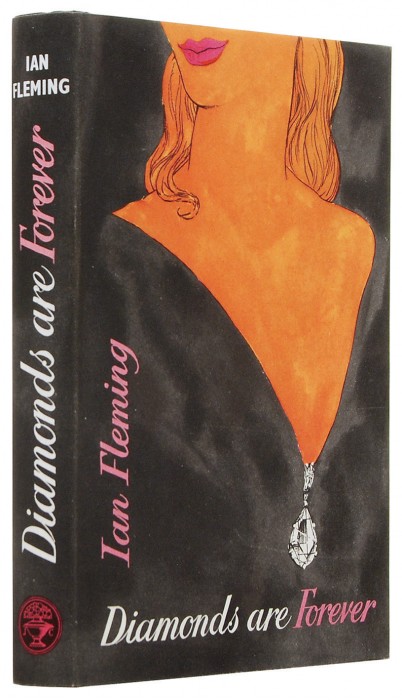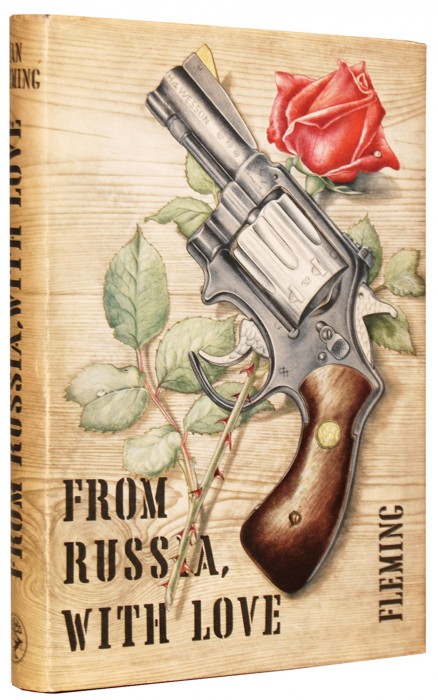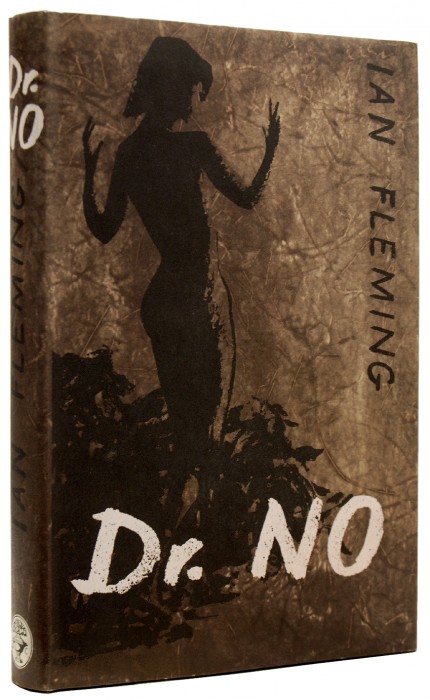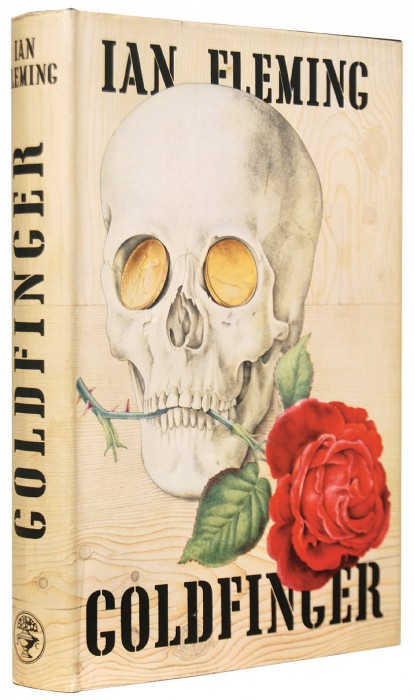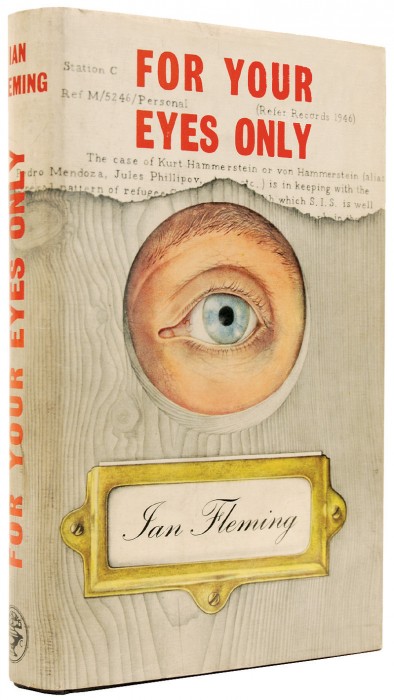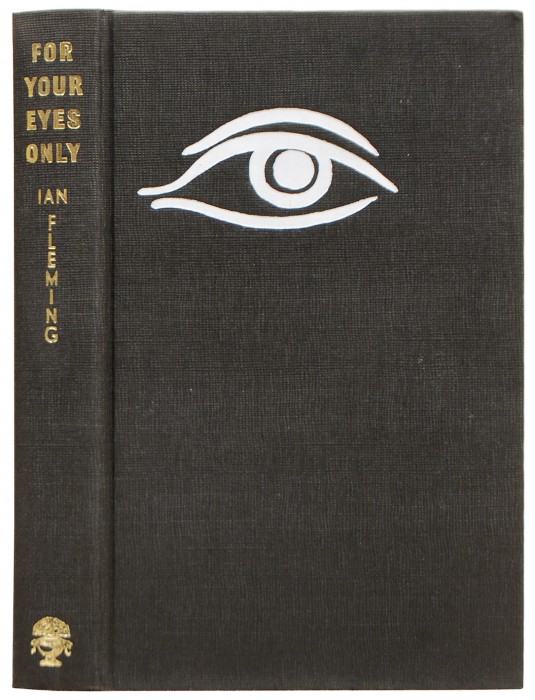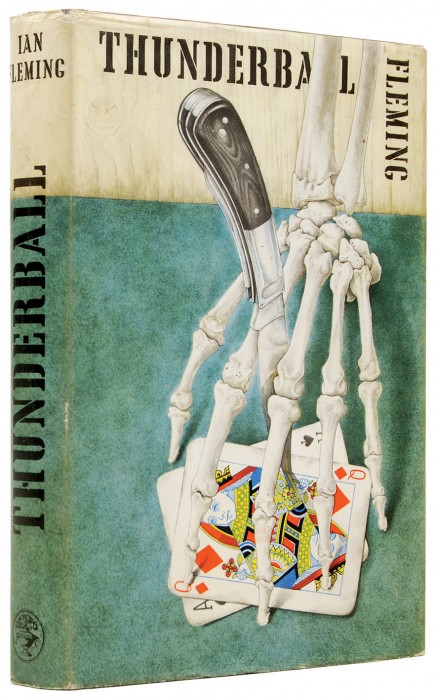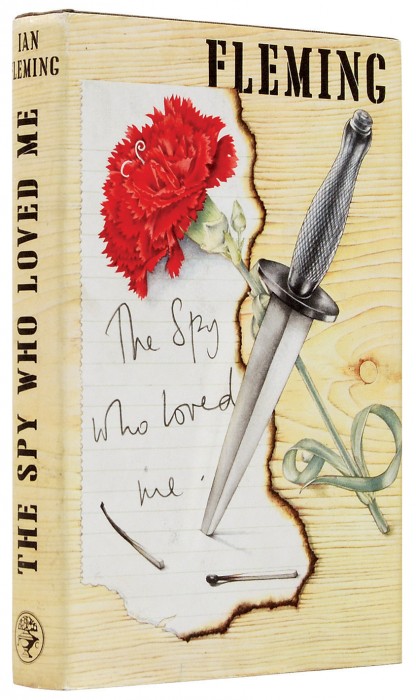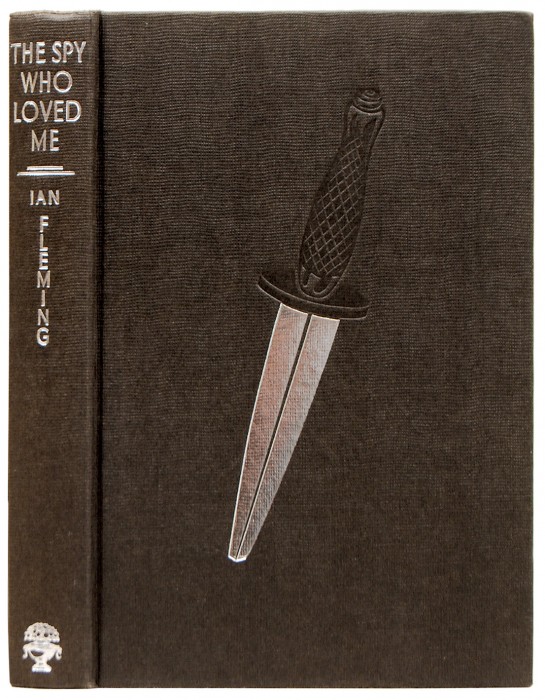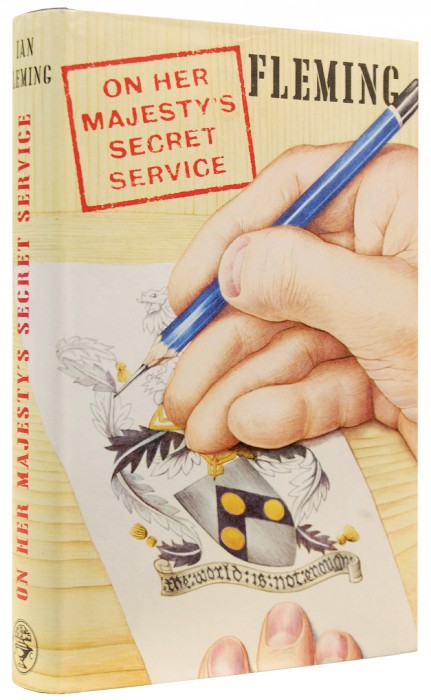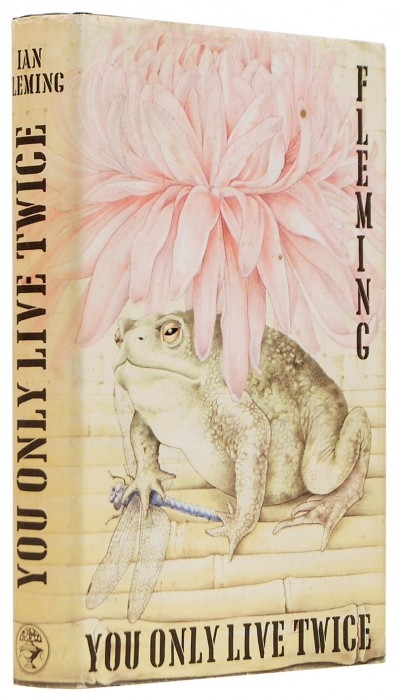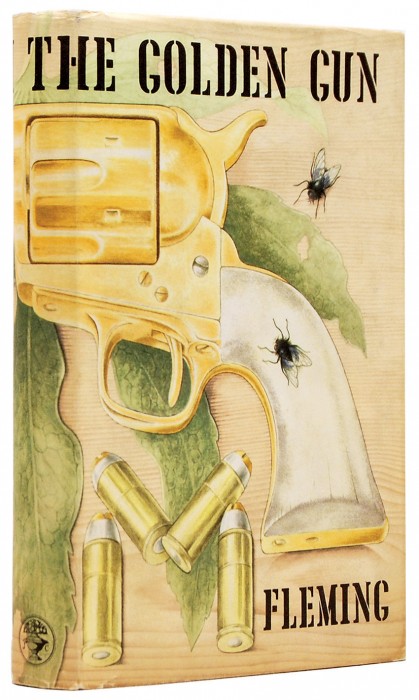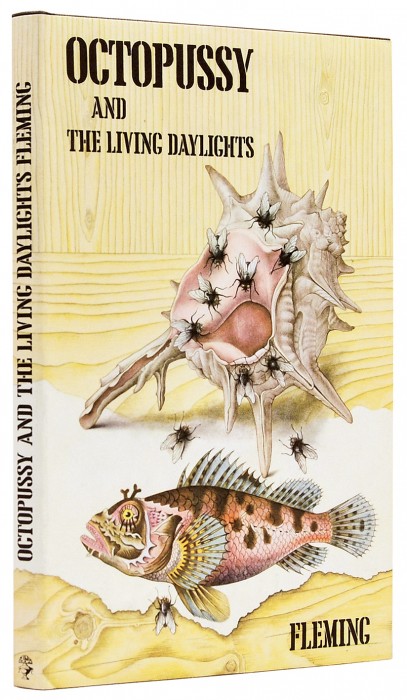Ian Fleming’s James Bond titles are some of the most popular spy thrillers ever written. They’re also beautifully designed books that look great as a set, and they’re a fun and accessible starting point for those interested in collecting modern literature.
Unlike some authors with complex publishing histories, Ian Fleming is straight-forward and his first editions are easy to identify. He wrote 14 James Bond books, all of which were published by Jonathan Cape in London between 1953 and 1966. There are only two simple rules to identify a Fleming first edition:
- the novel should say Jonathan Cape on the title page
- and it should state “First published…” with the correct year (and no others) on the back of the title page. Just like this copy of The Spy Who Loved Me:
To be truly collectible, a first edition Bond novel needs to be in its original dust jacket. For 13 of the 14 books it is easy to tell a first edition jacket: it must not bear any self-referential quotations from critics. For instance, dust jackets for Casino Royale that include a quote from the Sunday Times’ review of that novel are all second or later impressions.
Only one Bond novel has a specific point related to the jacket: second impression jackets for Live and Let Die have a line on the front flap that credits the jacket designer. First impressions, such as the one pictured below, do not have this line, which is referred to as the “jacket design slug”.
For collectors who have obtained the basic set of first editions there are two additional books that can be added to garnish their collection:
When The Man with the Golden Gun was first published a very small number of copies were decorated with a golden gun. For some reason, either the expense or practicality of applying the design, this was quickly abandoned and copies in this state are now rare:
There is also a signed limited edition of On Her Majesty’s Secret Service, the only signed limited edition of a Bond novel produced during Fleming’s lifetime:
In addition to their simplicity, James Bond novels are also popular because of their affordability, as the disparity between prices at different levels of condition is much greater than in other modern books. Perfect copies can run into the tens of thousands of pounds, but it is possible to find nice ones ranging from only a few hundred to a few thousand pounds, depending on the book. Condition is a primary consideration when valuing Bond novels, and even a flaw as minor as a price-clipped dust jacket can noticeably affect the price, which is good for collectors. Scarcity also plays a role. Fleming’s last book, Octopussy, is common enough that fine copies are valued at around £175 pounds.
Fleming’s Bond titles have also been consistently strong sellers, steadily increasing in value over the last fifty years, particularly when associated with a blockbuster film. Until 2006 Casino Royale was the only one of Flemings’ novels left unfilmed, and its popularity was considerably revived upon the release of the excellent cinema adaptation starring Daniel Craig. (The film’s title sequence, which you can see at YouTube, was directly inspired by the dust jacket of the first edition.)
After Fleming’s death in 1964 other authors were hired to continue the Bond franchise, most notably Kingsley Amis, who published Colonel Sun in 1968 under the pen name Robert Markham. The original 14 books, though, continue to hold the most appeal to readers, film fans, and book collectors. Below, images of all the books in chronological order. Click here to see the Ian Fleming titles that we currently have in stock, or sell book to us if you’d like to sell a first edition Bond novel.
